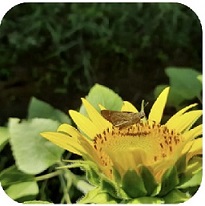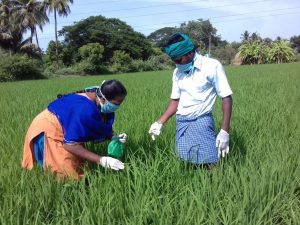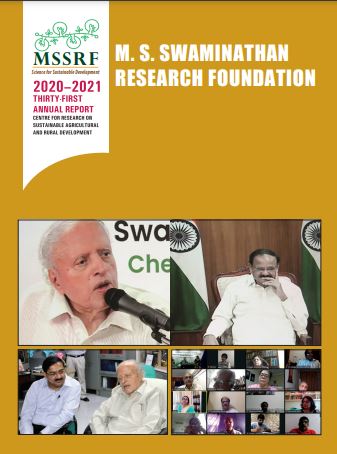Superfarm project is about ecological interventions that support natural enemies and pest regulation services for rice in Puducherry
Globally, agricultural landscapes are undergoing drastic changes due to the impact of climate change, rising demand for food, and loss of biodiversity. Intense agricultural practices undermine food sustainability by threatening biodiversity and ecosystem services. There is also a growing conscience among the younger generation for Climate Smart Agricultural (CSA) technology and sustainable agricultural practices.
A sustainable agriculture strategy can ensure food security while reducing or reversing biodiversity loss. Ecological Intensification (EI) and diversification are much needed to build a successful sustainable agriculture system.

Along these lines, the Superfarm project investigates how EI techniques like reducing inorganic inputs, building floral borders and surrounding landscape / context affect the local natural-enemy biodiversity, pest abundance, and rice crop yield in specific smallholder regions of India. MSSRF and University of Reading (UK) are partnering on the Superfarm project in the Puducherry region.
In Puducherry, on an average, 16300 ha of area is under Paddy cultivation[1] and the IRRI report[2] says that paddy farmers around the world lose about 37 per cent of their rice crop to pests and diseases every year.
MSSRF uses farm-level interventions in conjunction with landscape gradients to assess the effects on natural enemy communities and pest regulation, particularly for the case of Yellow Stem Borer (YSB) in paddy. Twelve farms managed by individual smallholders were chosen; each farm was less than two ha in size and at least five hundred metres apart. The two external approaches used were –
- High Input Approach: Managing crops with chemical fertilisers, fungicides, pesticides, and herbicides.
- Low Input Approach: Developed by the research team, this approach uses farmyard manure-based inputs, organic growth stimulants, plant extracts, bird perches, and neem oil, as an alternative to synthetic chemical applications.
[1] https://agri.py.gov.in/allcrops.html
[2] http://www.knowledgebank.irri.org/step-by-step-production/growth/pests-and-diseases
Furthermore, three selected farms from each external input type (high, low) had co-crops planted on borders / bunds surrounding the rice field, and three farms had bare bunds with no additional crops planted. This flower border around rice was composed of black gram – which not only offered nectar and pollen resources for beneficial arthropods, but can also be harvested, adding to the farmer’s food basket and income. In addition, different land-use types were also analysed to understand how surrounding land use influences on-farm arthropod abundance and community composition (spiders, coccinellids, pests and natural enemies).

Over 670, natural enemy specimens were collected and identified; the unidentified ones were recorded as morpho species. Among the potential natural enemies observed were 42 per cent of spiders, 28 per cent of coccinellid beetles, 20 per cent of dragonflies and damselflies, 4 per cent wasps, 3 per cent ants, and 2 per cent were other beetles.
EI significantly influenced the community composition, but farm management or field position had zero to little effect on it. The spider abundance was significantly greater at low input sites and those without floral borders when compared to the ones with floral borders. Unfortunately, no experimental factor affected the Coccinellid abundance. There was a marginally higher abundance of YSB egg at low input sites compared to high input sites, however, significantly fewer pests were found at sites with floral borders regardless of input levels.
The experimental fields were surveyed three times throughout the rice season during the early, mid and late seasons. The results revealed that there was a significant difference between high input and low input farms, ranging from 900 kg/ha to 1725 kg/ha. Both high and low input farms showed opposite effects to floral borders; low input farms showed higher yields with floral borders, though neither result was statically significant.
To conclude, spiders and coccinellids — two of the most common natural enemy groups — responded positively to a low input approach emphasising the need to consider local landscape context when implementing EI management strategies. In India, reduced external inputs in rice crops can enhance the natural enemies of rice crops, but the EI practices must be tailored to the local context to ensure that benefits are maximised, and the potential disservices are mitigateds

